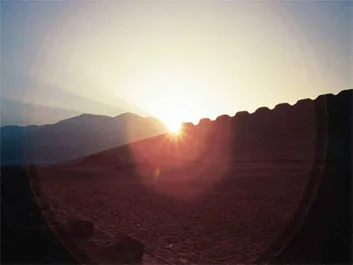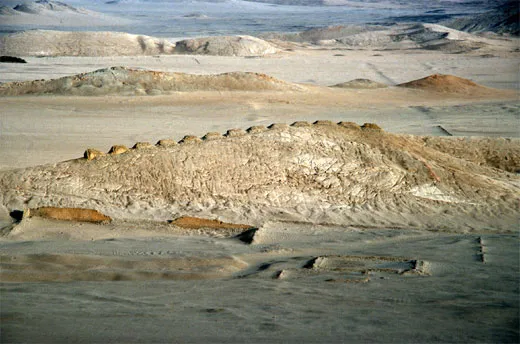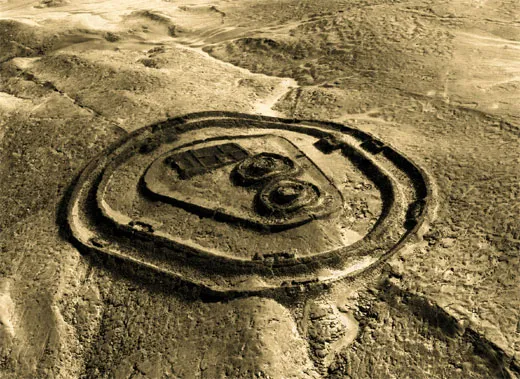Return of the Sun Cult
In Peru, scientists discover the oldest solar observatory in the Americas
/https://tf-cmsv2-smithsonianmag-media.s3.amazonaws.com/filer/sun_day.jpg)
As archaeologists evaluate whether an ancient temple in Buena Vista, Peru, functioned as a calendar, a different research team is preserving the remains of an unusually elaborate astronomical complex just north, in Chankillo. This solar observatory is considered the oldest in the Americas, dating back to the 4th century B.C., and it offers unique physical evidence that a sun cult inhabited Peru at least 1,500 years before the Incas.
"We have references that Incas practiced solar observation, but none of those sites have been preserved," says the site's lead archaeologist Ivan Ghezzi of Yale University and the Pontifical Catholic University of Peru. "We don't have a single one of this complexity."
Though Spanish chroniclers described "sun pillars" used by the Incas to mark specific solar events, the physical remains of these pillars—likely destroyed during 16th-century anti-idolatry campaigns—have not been found. Archaeologists have uncovered the base of two pillars on an island in nearby Lake Titicaca, but the observatories in Chankillo appear more sophisticated than any of these Incan structures, says Ghezzi, who published his findings along with coauthor Clive Ruggles of the University of Leicester, in Science last month.
The Chankillo observatory consists of a row of 13 towers that precisely tracked solar movement throughout the year. When viewed from two main observation points, the sun would have reached one end of the tower line at the winter solstice and the other end at the summer solstice. The regularly spaced gaps between each tower could have been used to divide the year into even shorter intervals of 10 to 12 days.
Ghezzi and his colleagues found one of the main observation points near a pair of courtyards about 220 yards west of the towers. A long white corridor, accessible from one of the courtyards, opened onto a view of the towers. This opening lacked proper structure for affixing a door, which led the researchers to identify it as a clear, unobstructed vantage point. Additionally, pottery and artifacts that could have served as ritualistic offerings surrounded this opening but no others.
The second observation point rests in almost the exact same position due east of the towers. A cluster of patios and buildings, facilities for storing corn beer, a large plaza and ceramic offerings near this spot suggest a festive atmosphere. This observation point likely functioned as the setting for large ceremonies during the solstices, and perhaps other times during the year such as the solar equinox, says Ghezzi. The western point probably served a more technical, calendrical purpose.
Restricted entryways guarded each observation point: to the west, it blocked the passage from the courtyard to the corridor; to the east, the room leading to the vantage spot. Ghezzi describes these restrictions as evidence that only a few key members of this society could access these ideal viewing points. Large crowds could see the towers from other areas, but only these observation points offered complete and precise solar information.
In the days leading up to major ceremonies, a ruling group might have used this information to predict the solstices, says anthropologist Brian S. Bauer of the University of Illinois at Chicago, who was not part of Ghezzi's research team. Because such societies considered the sun a god—as the giver of warmth and provider of light—a special relationship between these leaders and the solar event could legitimize their authority.
"You get this linkage between the solar event and the person who's orchestrating the ritual," says Bauer. "You get this relationship, publicly declared."
The Chankillo sun society seemed to disappear in a couple hundred years—damage to a nearby fort suggests that it fell to an enemy—and exactly how these sun cults functioned remains a mystery. But the experience of seeing the solar events just as the Chankillo people did might soon be possible for anyone. Ghezzi is working to turn the site into a location for visitors, and he says people can see the sun slide along the towers almost exactly as it was seen 2,300 years ago because the sun's movement hasn't shifted much since that time.
Says Ghezzi: "You can really experience something that people experienced in the past."
/https://tf-cmsv2-smithsonianmag-media.s3.amazonaws.com/accounts/headshot/eric-jaffe-240.jpg)



/https://tf-cmsv2-smithsonianmag-media.s3.amazonaws.com/accounts/headshot/eric-jaffe-240.jpg)